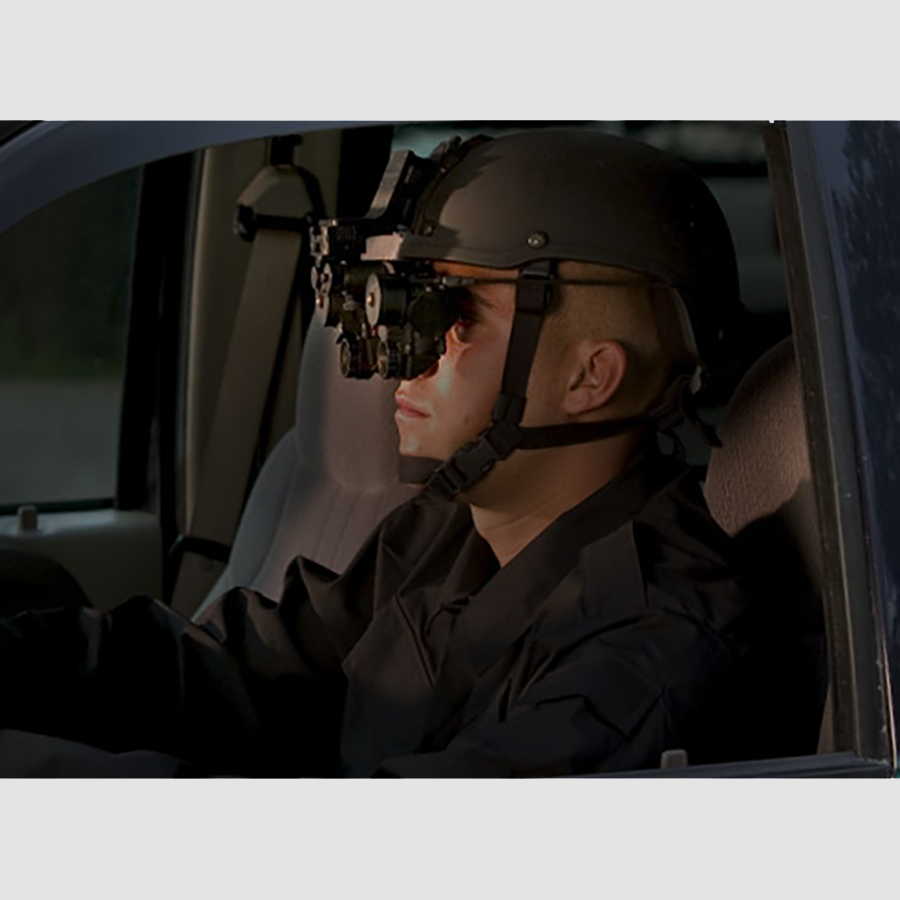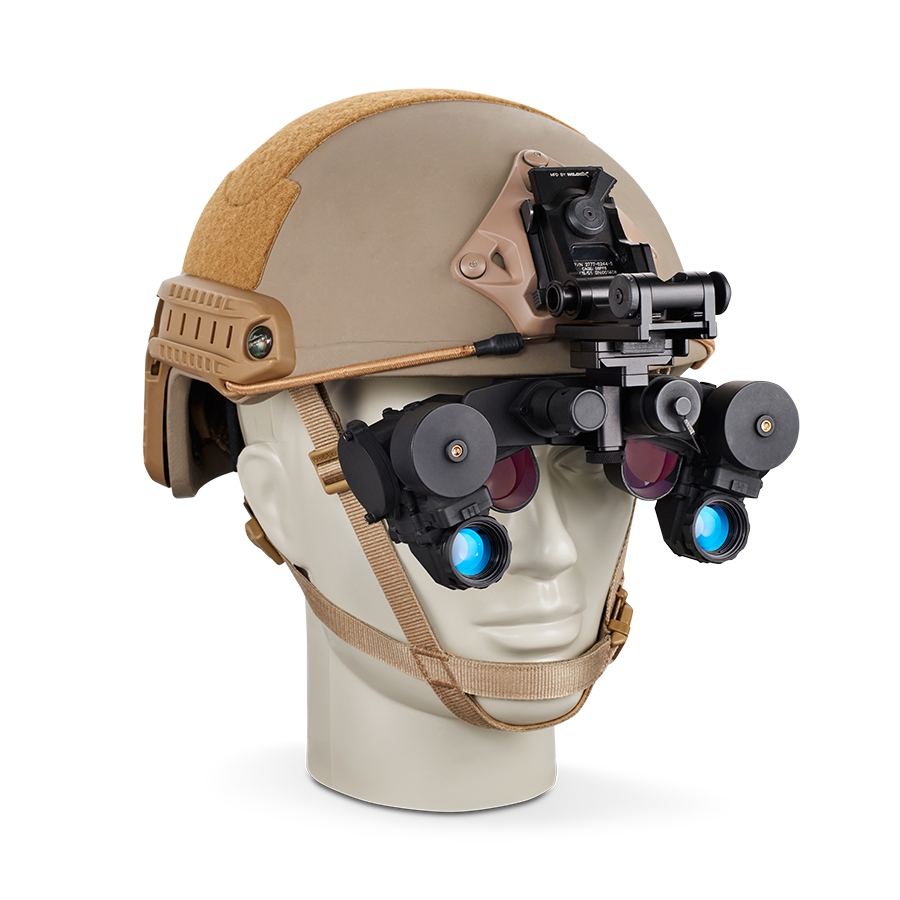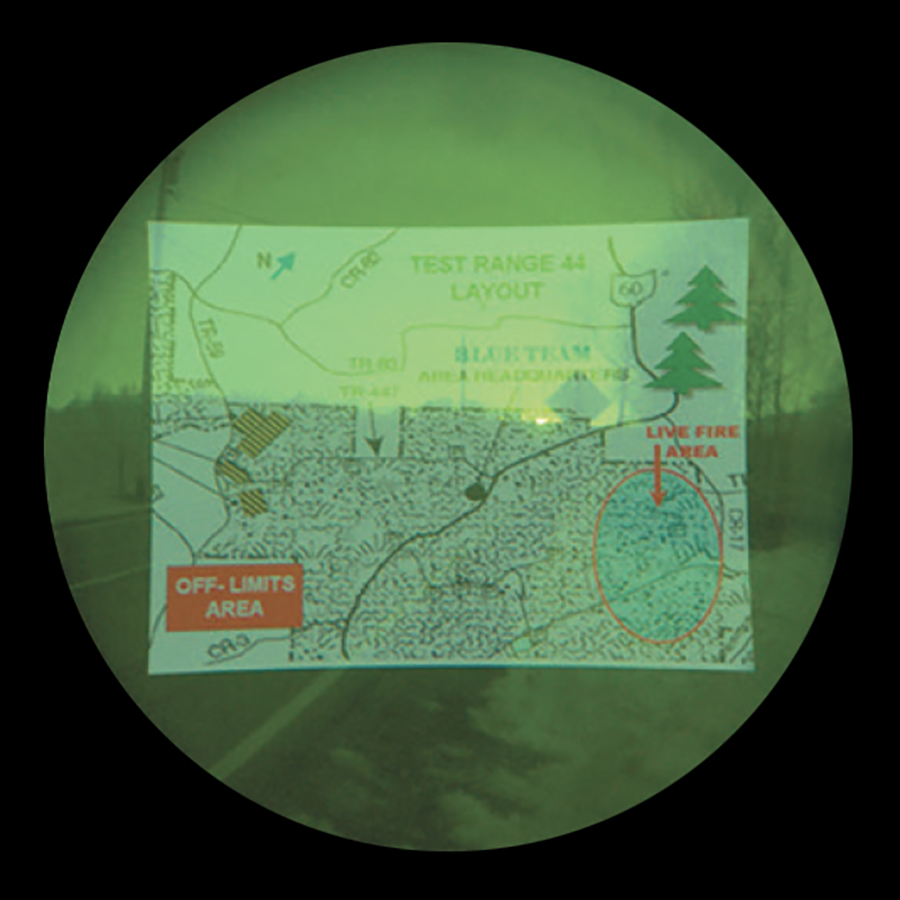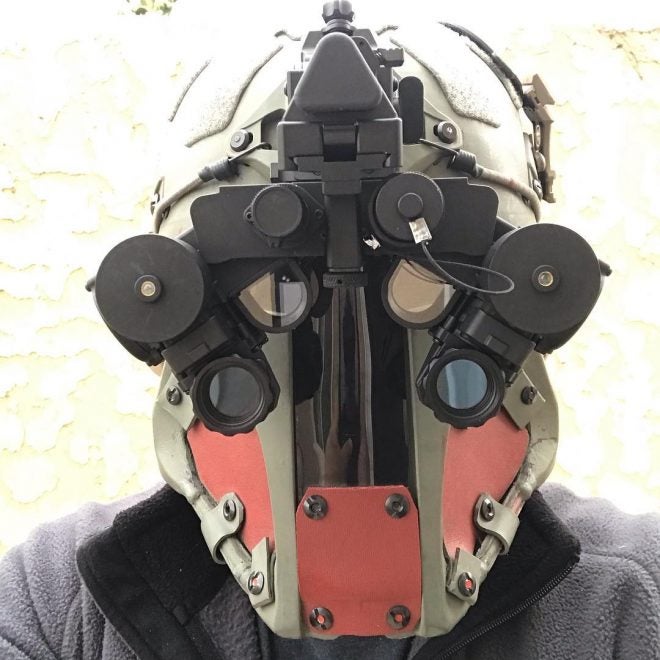When you think of NODs (Night Observing Device) you think of a short tube that sticks out about 4.5″ from your face. In most cases they are like a scope, light enters in through the objective lens and in a straight line, shines out the back through the eyepiece and out the eyepiece into your eye. Well, Steiner has an unconventional approach to dual tube night vision. The PVS-21 is a low profile night vision goggle that does not stick out as far. Reducing the protrusion by about 3-4 inches. Making the PVS-21 the lowest profile NODs on the market.

Steiner PVS-21: Phoropter or Night Vision Device?
The PVS-21 is drastically different from your run of the mill PVS-14 or similar NODs. Like I mentioned above, PVS-14 and pretty much every other night vision device works in a linear fashion. Objective lens -> Intensifier tube -> Eyepiece. However, the PVS-21 uses a series of mirrors and prisms to bounce the image. It is a somewhat complicated path.
Take a look at the photo below. See the clear little windows? Below those are the objective lenses.

Using mirrors and prisms the light enters into the objective lenses at the bottom of the PVS-21. The light is bounced upwards into the intensifier tube. The light exits the tube and hits another mirror bouncing the light inboard toward the middle of the bridge. Where it hits another mirror bouncing the light down into the prism eyepiece where it is bounced into your eyes.


See Through Head-Up Display Windows
One benefit to this overly complicated design is the see-through HUD like windows. With the tubes off, visible light shines through the windows and you can see without needing to lift or remove the PVS-21.
The PVS-21 that I have is merely a replica prop. However, I met up with Aaron K. who actually owns a set of PVS-21s. I was eager to meet up and check out this rather uncommon night vision device.

PVS-21 dummy on top, real PVS-21 below.

Other than the weight and use of metal the real PVS-21 has one major difference over the dummies. Aside from the fact that these actually work, the see-through lens was drastically different from the dummy PVS-21. The real version that Aaron has, has a ruby colored filter covering up the eyepieces. This reduces the amount of light coming through them, making it almost useless in the dark. Unless you turn on the PVS-21.
Below are some photos I took using my iPhone looking through the lens. With room lights on, I could see my surroundings. But without the light, I could not see at all.



The ruby filter is there to eliminate the green glow from the intensifier tube. You can see the windows glow without the filter below.

Photo by TNVC

Aside from lighting up your eyeballs with green light, the other problem I had with the PVS-21 is the size. Due to the complicated light bouncing in each side, the housing blocks a lot of your peripheral vision. When wearing normal night vision goggles like dual-tube binos, you can typically look under or around the tubes to see your environment. Not possible with the PVS-21.
I had hoped that since you are actually looking through a prism that at some point visible light will be able to shine through the lens even if the image intensifying tubes were turned on. While technically it does work, it is not useful. The proximity of the objective lens is too close to the eyepiece and your image gets shifted a bit.
I tried to see through my Eotech and acquire the reticle with visible light. With the PVS-21 turned on, I can see the back of my rifle. The image is superimposed over the actual image I see through the window. But since the objective lens is not in line with the eyepiece, it shifts the image slightly higher. So when I tried aiming with my Eotech HWS I had to find the right position of my head to see through the window. I also had to crank the Eotech reticle brightness all the way up in order to see it past the night vision image.
PVS-21 Isn’t All That Bad. Accessorize It!!
Steiner designed the PVS-21 to be modular. While there are accessories made for the PVS-14 like the COTI (Clip On Thermal Imager), the PVS-21 was designed to go beyond that.
They have a port built into the side that allows you to input video from a digital source. See the image below. The thermal image is being displayed from the thermal weapon sight. It is almost like augmented reality.


PVS-21 in standard configuration.

PVS-21 with a clip-on thermal imager

PVS-21 with CEHUD
In the photo above, you can see the CEHUD (Conformal Enhanced Head-Up Display)
The CEHUD – Conformal Enhanced Heads Up Display provides improved situational awareness, reduced sensor-to-shooter gap and enhanced capability to detect, recognize and identify targets. It is a lightweight, compact and ruggedized HUD that is day or night capable. Designed for use with the AN/PVS-21 LPNVG Goggle, Model 2740 Monocular and Model 2758 Dayviewer.
- State-of-the-art sensor integration
- Accepts NTSC/PAL format color video signals or NTSC/PAL black & white video signals.
- Digital video feeds are overlaid directly onto the operational view via an SVGA OLED.
- Overlays key sensor information such as communication, navigation, threat assessment and targeting data directly onto the day or night view.
- Eliminates the need to carry multiple video displays.
- Fingertip adjustment of power, brightness, contrast and diopter adjustment
- Greatly enhances situational awareness



The PVS-21s are not cheap. Aaron is trying to sell his for $6,800 and while that is cheaper than some dual tube binocular night vision, it is a gimmick to me. Unless I had the CEHUD and used it with a GPS and map or a thermal weapon sight, it does not offer much more than regular night vision. There are tricks and tips you can incorporate to overcome any drawbacks with a traditional set of NODs. You can even buy a COTI and add it to a PVS-14. The benefits of the PVS-21 are overshadowed by its drawbacks. With this configuration, I could not see through the eyepiece in the dark. Defeating the purpose of having a see-through lens entirely. Lining up your optic is awkward with the offset objective lens. While it is a neat concept, it leaves much to be desired especially the reduction of peripheral vision which is mandatory if you are interacting in a 3-dimensional environment.
 Your Privacy Choices
Your Privacy Choices
